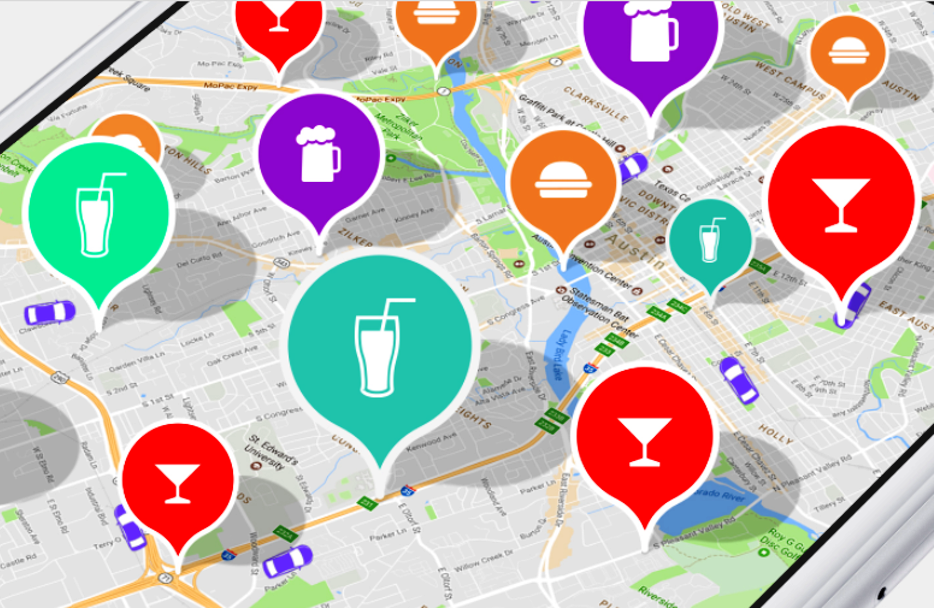How Can Location Analytics Revolutionize Your Business?
Nowadays, we take for granted that location information is always available. Using smartphones or computers, a map is present as a commodity, assisting us in decisions that need a spatial context.
In the business world, we see an increase of the perceived importance of having analytics that also use the location component of data. According to a Location Intelligence study conducted by Dresner Advisory Services, more than 70% of the inquiries in industries like Telecommunications or Retail consider Location Intelligence very or critically important for their business. Companies have deployed location analytics in the past few years to optimize marketing campaigns, launch up sell campaigns, open new stores and much more. When location data are combined with existing consumer information it unlocks indispensable insights about their customers’ behaviors.
Similar to the emergence and wide-scale adoption of web analytics, location analytics has now become a staple for businesses in order to facilitate a better design, manage and measure online & offline consumer trends. In the near future, it could become a make-break factor among businesses which possess a competitive edge and those who lack one.
So how can Location Analytics help drive success to your business?
1. By understanding your customers better
By analyzing and visualizing data on maps, companies can get better business insights and act with a deeper knowledge of their customers. Companies have multiple ways to get on-ground information about the consumers, which helps them to know their buying behaviors and conditions within different demographics. Businesses are able to cross their own customer’ data with third party – like geo-demographic data sets or economic studies to create well-informed decisions.
2. By measuring competitors’ performance using Location Analytics
Whether online or offline, Location Analytics can help analyzing the performance of competitor(s), in terms of business and geographic considerations. It can essentially help businesses tap information that could suggest them areas of improvement and ways their rivals are currently succeeding in the market. It could detail vital information that could help a business save key expenditures by furnishing information about locations where stores have maximum footfall and spots where they are likely to fail.
The “where” factor plays a very important role here. “Where are my competitors?”, “Where are my customers?”
If we talk about retail for example, it’s important to see where the competitors currently operate, how long they have been open or which are the locations where they recently closed stores.
If the competitor is a larger, more well-known brand, pinpointing their locations on a map can help to delineate a strategy to find open areas with unexplored business potential.
3. By optimizing marketing campaigns
Geomarketing is helping businesses better understand where their target customers are and where they can launch campaigns with more probability to be successfully.
Just imagine, you are promoting your new home insurance in an area where most of the people rent their homes and not own them. Your marketing efforts will not reach your desired target and you would have to launch your campaign again, in an area where you think you are likely to target home owners. But why would you base your decisions on assumptions when you can base them on accurate data?
Furthermore, geomarketing is a highly rewarding solution to launch dynamic marketing campaigns to target particular consumer segments. Knowing in forehand the surroundings of the points of sales, combined with the areas potential and demographics, helps companies to tailor made communication for each area to reach the maximum return on each campaign.
For the marketing teams, it empowers them to design campaign strategies with finesse since location intelligence gives them indispensable data about the placement of their customers and how to target those using tailored promotional messages. By using this strategy, they can launch street marketing campaigns that target consumers on-ground (billboards and others) and circumvent expenditures on testing markets.
Conclusion
In this era, the key to the success of a business is not necessarily based on bigger budgets, but better tools and technologies. A successful marketing is now a blend of intelligent product promotion and smart targeting of the consumers at large. It is a key competitive edge for emerging and established businesses alike, levelling the playing field to a certain extent. Mapidea is changing the rules of the game. Are you ready to reap the rewards we promise? Click here to request our demo.




